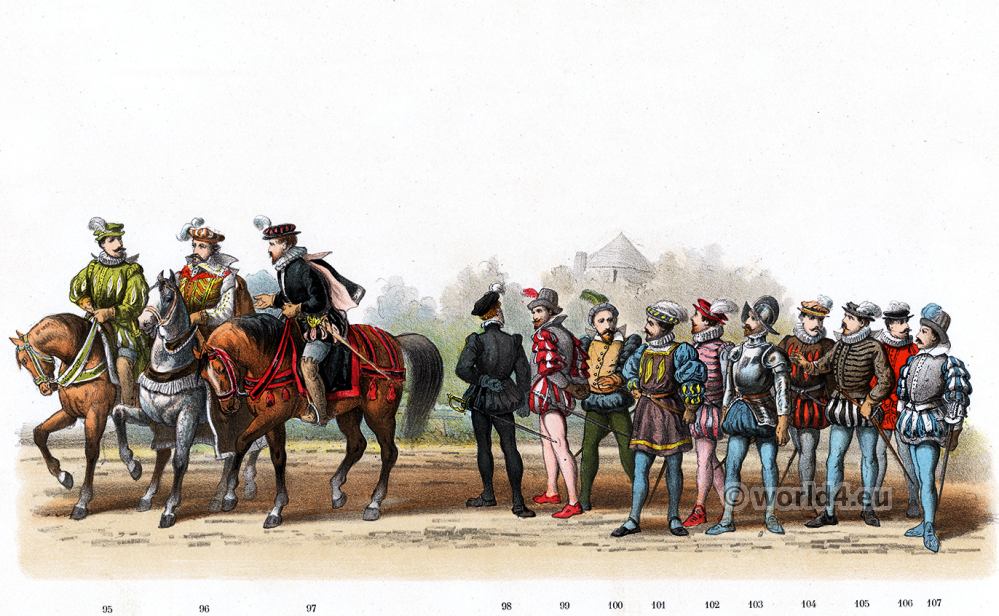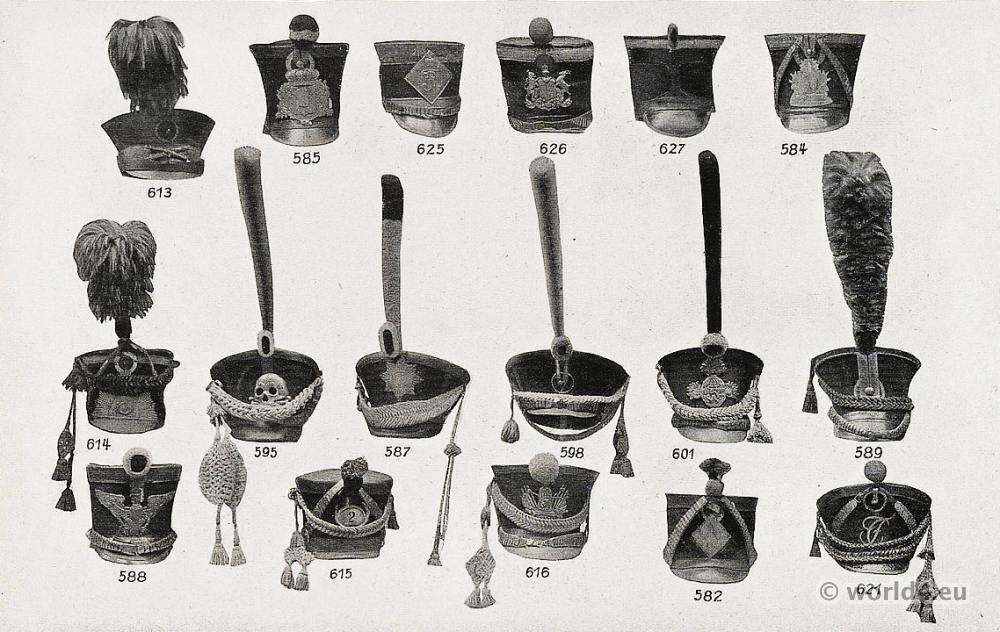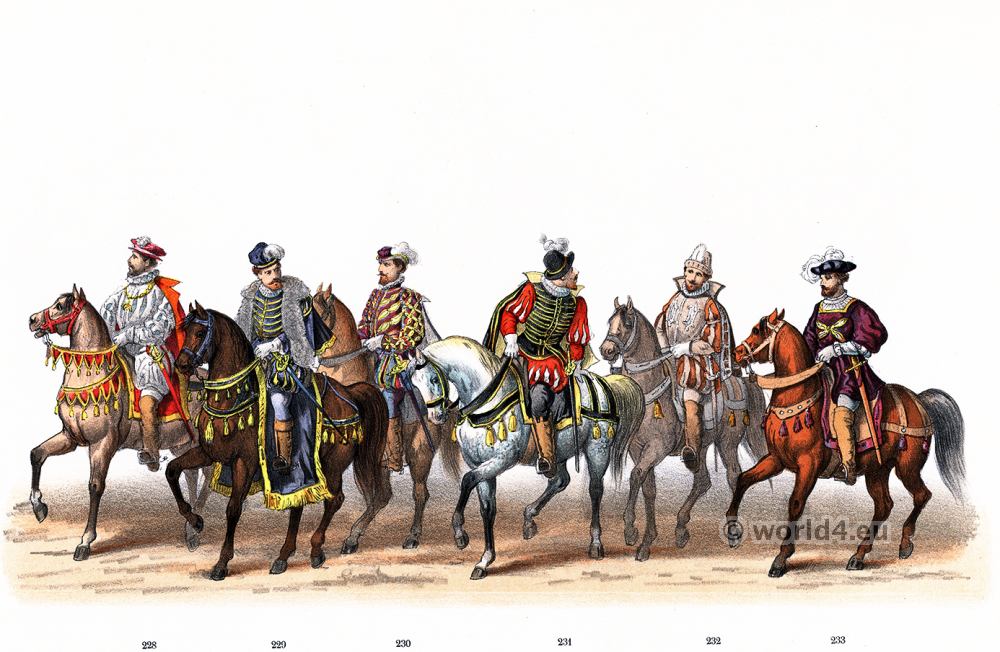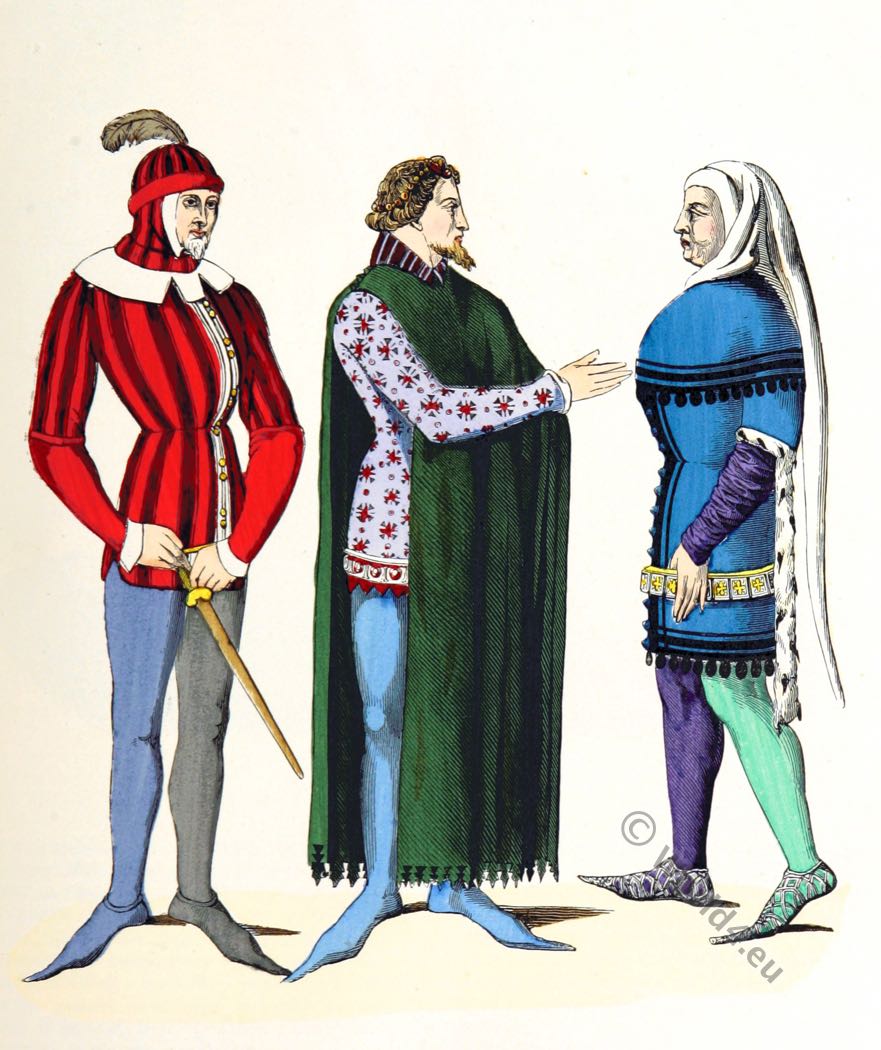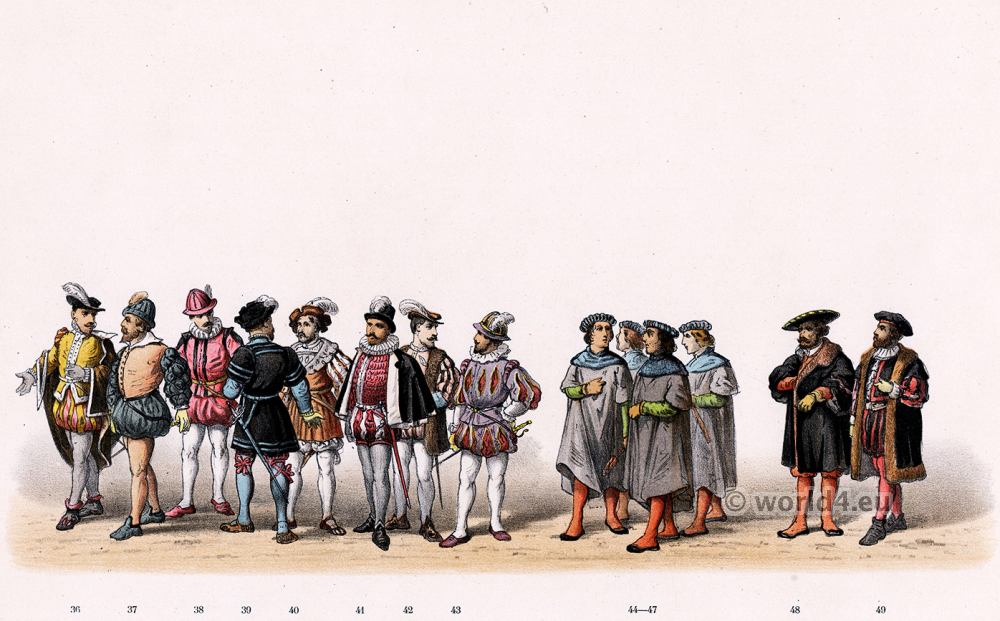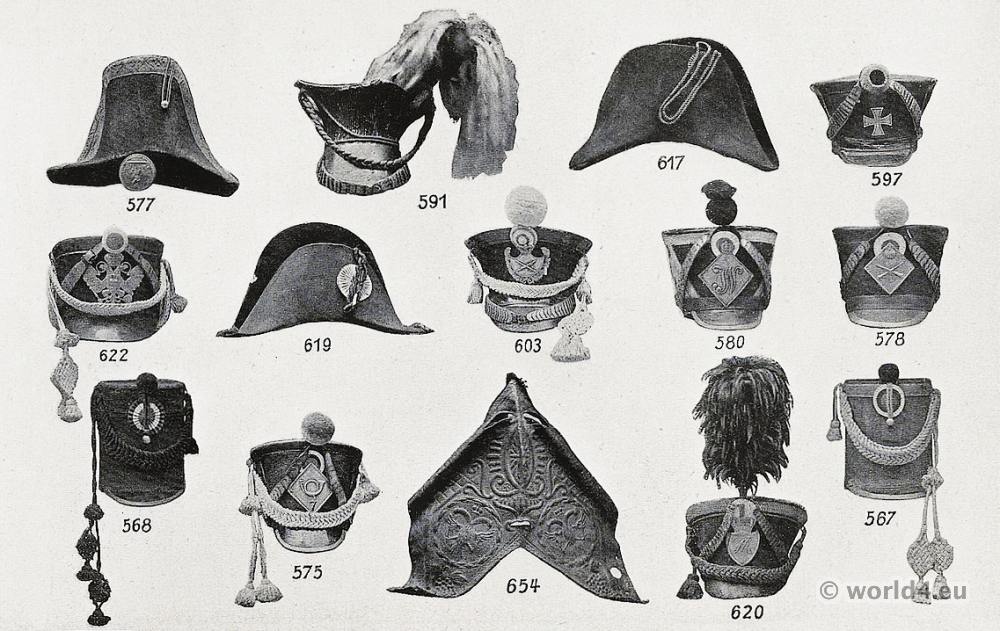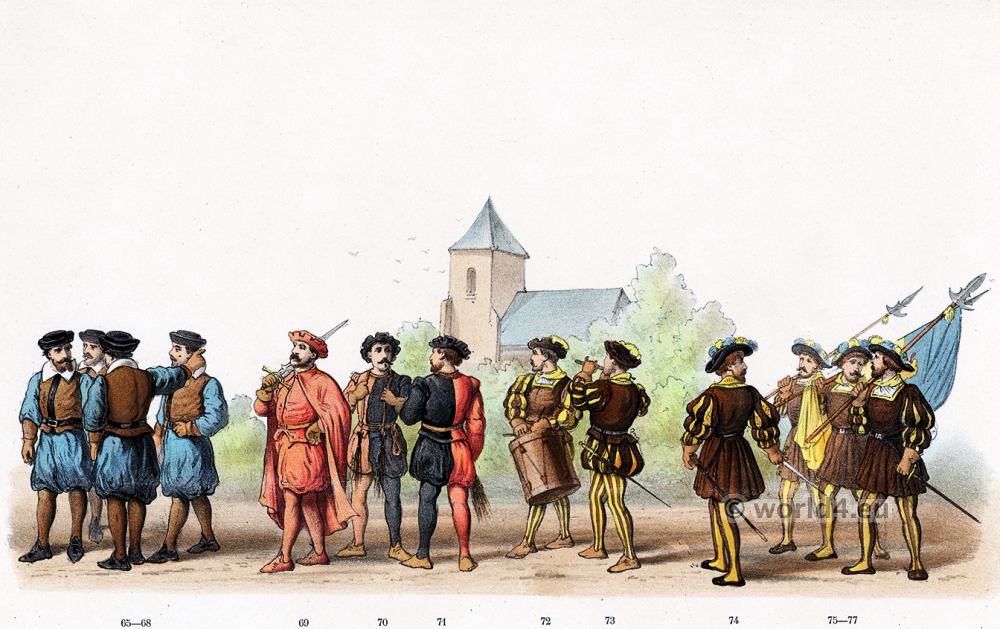Earls and Lords, Landdrost/Reeve. The Guelderian Wars 1546.
Plate 9.
- Adolf Bentinck, Lord of Loo
- Karel van Gelre, Lord of Spankeren
- Johan van Keppel, Lord of Cannenburg, Landdrost/Reeve of De Graafschap *).
- Hendrik van Maschereel, Lord of Balgoy
- Reinier van Aeswijn, Lord of Brakel etc.
- Carel van Middachten, Lord of Herveld
- Johan de Cocq, Lord of Delwijnen
- Gijsbert van de Poll, Lord of Leeuwen
- Thomas van Appeltern, Lord of Persingen
- Jasper van Wijhe, Lord of Echteld
- Willem van Rossum, Lord of Zoelen and Dalen
- Johan van Weze, Lord of Dodewaard
- Johan van Boinenburg, Count of Ubbergen.
*) A landdrost, drost or drossaard was in the late Middle Ages, especially in north-western Germany (on the Lower Rhine, in Westphalia and East Friesland) but also in Mecklenburg, Schleswig-Holstein and in the Netherlands, an official who represented the lord of the manor for a certain area with the tasks of maintaining public order, legislation, jurisdiction and defence of the assigned territory.v In the French era, the term landdrost was introduced for a Dutch administrative official who governed a certain area. In the Republic of the Seven United Provinces, the “drost” was one of the administrators of a town or a certain area. Thus, the administration of Muiden consisted of a drossaard, two mayors, five aldermen, three orphan masters and a aristocrat.
Reeve comes from the Old English gerēfe, which is related to German greve.
The name comes from Norman England, where the Reeve was a representative of the Earl ‘Earl’, who was administrator, tax collector and alderman (prosecutor and judge) at the same time. He was also responsible for the immediate defence of the country and the raising of men for his lord’s army. In the event of a crime, he organised (with the help of the constable) the pursuit of a fugitive offender and was also called to major accidents.
Source: Costume cavalcade, has held by members of the Leidsch Studenten Corps, at 24th of June 1890, commemmorating the 300th anniversary of Leyden University, re-living the State-entry of Emperor Charles V (1500-1558), into Nijmegen municipality, the Netherlands, 9th February 1546.
Literature:
Journal of Medieval Military History, Volume 10. Boydell Press, by Clifford J. Rogers, Kelly DeVries, et al.
Emperor: A New Life of Charles V by Geoffrey Parker.
Drawing on vital new evidence, a top historian dramatically reinterprets the life and reign of Holy Roman Emperor Charles V, ruler of the world’s first transatlantic empire.
Discover more from World4 Costume Culture History
Subscribe to get the latest posts sent to your email.

